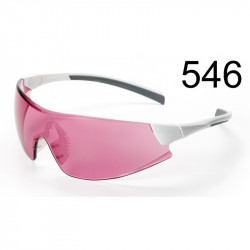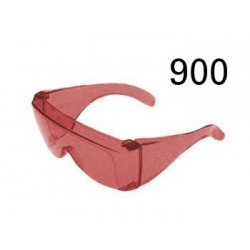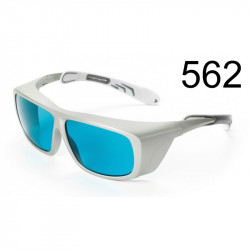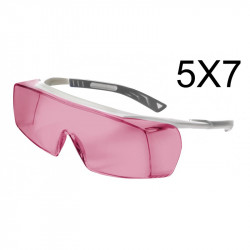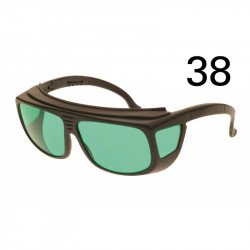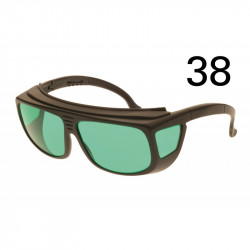Laser Safety Goggles There are 106 products.
Operating with open laser systems of class 3R and above can result in serious damage to the human eye. Therefore, it is important to protect the eyes accordingly by means of suitable laser safety goggles. A norm-certified laser safety goggle fulfills the legal requirements and safeguards the eyes from dangerous laser radiation. The goggle frames can be fitted with a variety of laser safety filters made of polycarbonate or glass. Wavelengths from the deep UV to the far infrared range and laser modes from continuous (cw) to the ultrashort pulse range (fs pulses) are covered. This means that the entire laser safety goggles are certified according to DIN EN 207 (full protection) or DIN EN 208 (protection during alignment work).
Laser Eyewear, 720-1070 nm
Laser safety goggles according to DIN EN 207 with polycarbonate filter and a daylight transmission of 11 %.
Laser adjustment goggle, 589-699 nm up to...
Laser adjustment goggles according to DIN EN 208 with polycarbonate filter and a daylight transmission of 15 %.
Laser Safety Goggle
Laser safety goggles according to DIN EN 207 with polycarbonate filter and a daylight transmission of 32 - 40%.
Laser Eyewear, 720-830 nm
Laser safety goggles according to DIN EN 207 with polycarbonate filter and a daylight transmission of 33 %.
Patients Goggle 190-580 nm
Laser safety goggles for patients according to DIN EN 207 with glass filter and a daylight transmission of 14%.
Laser Safety Goggle, 645-1525/2800-3300 nm...
Laser safety goggles according to DIN EN 207 with glass filter and a daylight transmission of 40 %.
Laser Safey Goggle, 560-600 nm
Laser safety goggles according to DIN EN 207 with polycarbonate filter and a daylight transmission of 11 %.
Laser adjustment goggle, 528-534 nm up to...
Laser adjustment goggles according to DIN EN 208 with polycarbonate filter and a daylight transmission of 45 %.
Laser safety goggle, 180-532 nm
Laser safety goggles according to DIN EN 207 with polycarbonate filter and a daylight transmission of 48 %.
Laser safety goggle for telecom use
DIN standard certified laser safety goggles with ergonomic brackets for all laser wavelengths commonly used in telecom and a daylight transmission of 62 %.
Laser Eyewear, 625-850 nm
Laser adjustment goggles according to DIN EN 208 with polycarbonate filter and a daylight transmission of 12 %.
Laser adjustment goggle, 592-695 nm up to...
Laser safety goggles according to DIN EN 207 with polycarbonate filter and a daylight transmission of 32 %.




